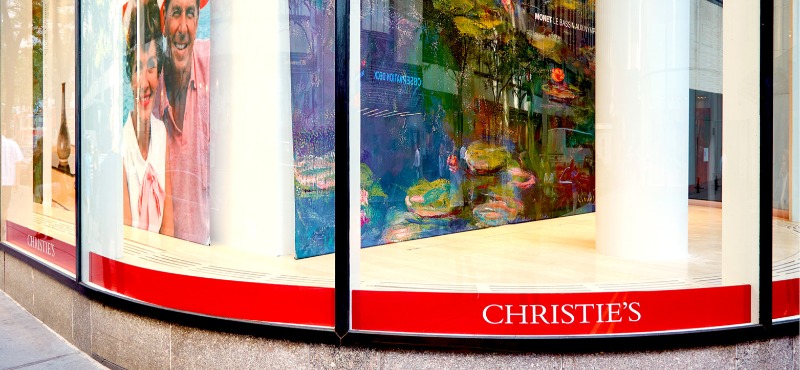There is much room for improvement in securing art sales and transactions, and mediation can do a lot to make this change happen. What is the state of play? What improvements do art buyers want to see in the future, to adequately resolve art disputes?
As an art lawyer practicing in the art law field since 2012, I have drawn the following observations from this experience:
- litigation is not the most time-efficient and cost-efficient approach to adequately resolving disputes in the art sector;
- the absence of secrecy in court proceedings is a major issue for the buy side of the art market, i.e. art collectors, art foundations and museums, deterring them from suing even bad players in the field; and
- lawsuits can drag on forever, especially if court-imposed mediation measures are taken, against the parties’ will, or if a party appeals the first-degree judgment handed down by the courts.
Consequently, a better option than litigation is needed in the art sector, such as mediation. However, there is a lack of effective mediation services offered to stakeholders operating in this industry. What can be done to increase the trustworthiness of this opaque yet dynamic market?
What users want to see in the art world, as far as alternative dispute resolution is concerned
Having advised many buyers of artworks and artifacts, I witnessed their deep annoyance at the lack of proper, often any, terms and conditions of sale provided by dealers when they made purchases. While this unlawful practice is reprehensible in itself, it becomes a major problem when a dispute arises out of the sale, which happens on a regular basis. If there are no T&Cs, or if they are badly drafted or incomplete, buyers cannot rely on them to find a way out of the dispute. Therefore, buyers want dealers and auction houses to provide clear, well-drafted and exhaustive T&Cs, at the time of sale, which set out that any dispute between the parties will first be mediated with a reputable art-specialized mediation body, before litigation can be started.
Secondly, all good faith stakeholders in the art sector want impartial and seasoned mediators, with an inner knowledge of the workings of art transactions, to get involved in resolving disputes in the most time-efficient and cost-efficient manner. Hence, there is a need for reputable and established mediation bodies in the art sector, which will support the parties in finding the right mediator and mediation setup, in a systematic manner, while operating economies of scale to keep mediation costs down.
Thirdly, and since nobody has any time to waste, the decision reached by the parties with the support of the mediator must be fully enforceable, in particular through an out-of-court settlement agreement signed by the parties. If such agreement is not executed by a defaulting party, the other party will immediately have the right to file a lawsuit in court, not only to resolve the initial dispute, but also to enforce the terms of the settlement agreement. Punitive damages should be paid by the defaulting party, as set out in this settlement agreement reached during the mediation. It is on this basis that good faith stakeholders in the art sector will accept to enter any mediation proceedings, and those rules need to be established at the outset of the mediation.
Fourthly, and this wish is especially close to the heart of buyers in the art world, as mentioned above, such enforceable decision reached with the support of the mediator must remain confidential, as mediation proceedings should be too.
What currently exists, as far as alternative dispute resolution is concerned in the art world
The current state of play in the art world is despicable: most dealers see themselves as being above the law and do not provide any T&Cs to their customers, be it buyers or sellers. They merely send invoices out and hope for the best.
Consequently, and due to such opacity, regular art world scandals making newspapers’ headlines, and a lack of barriers to entry for dealers in the art market, many potential buyers—especially high net worth individuals—refuse to invest in this asset class and stay away. Whenever they take the plunge, they are often faced with disputes arising out of their purchases or sales, especially with dealers and auction houses.
Finally becoming aware that it is in their interest to add security to transactions being made in their industry, art dealers and auction houses are reluctantly reaching the conclusion that mediation services are a must-have service.
The following art mediation bodies have therefore been set up, in the last twenty years.
Internationally, the World Intellectual Property Office (WIPO) Alternative Dispute Resolution for Art and Cultural Heritage service, located in Geneva, provides dispute resolution advice and case administration services to support parties in resolving disputes without the need for court litigation. Since WIPO does not want to disclose any information about the number of disputes being looked at, and hopefully resolved, by its body on a yearly basis, even to neutrals who are on the arbitrators’ and mediators’ panel like myself, its usefulness and relevance are a question mark. More recently, the Court of Arbitration for Art (CAfA) in the Netherlands was set up as a specialized arbitration and mediation tribunal exclusively dedicated to resolving art law disputes. Having applied to be on its arbitrators’ and mediators’ pool, I know that CAfA is not fully operational yet and it will be interesting to watch what added value it can bring, compared to WIPO’s similar services.
In France, the Commissaire du Gouvernement près le Conseil des Ventes—the latter being the regulating body of French auctioneers—provides mediation services in art law disputes. Having used the mediation services of the Commissaire on one occasion, to resolve a complex art dispute between an art collector and one of the top French auction houses, I am dubious about the efficacy and motivation of the Commissaire du Gouvernement, and French auction houses, to efficiently tackle the issues at end and resolve them through mediation. Another French mediation body focused on the art sector is the one set up by the Comité Professionnel des Galeries d’Art—a trade association to which practically every French art gallery of a decent size belongs. Having also used their services, to attempt to resolve several disputes with French dealers, my concern is that the mediation service of the Comité lacks impartiality, as well as the necessary clout to tell off one of its (paying) members that its commercial practices may be shady and unlawful. To conclude, the French art mediation services in place are merely here to reassure buyers that, should they face an issue with dealers and auctioneers, they will have a cheap recourse outside the courts. The reality is that these French art mediation services do not deliver on their promises and merely pay lip service to the supply side of the French art industry.
There are no specific art-focused mediation services, set up by impartial actors or regulators, in the UK; the National Association of Valuers and Auctioneers (NAVA) merely being a “self-regulating body”. However, I attended a talk organized by the Professional Advisors to the International Art Market (PAIAM) last week, in which new mediation services branded Art Resolve, were brought to light by the Art Loss Register general counsel and director of recoveries, James Ratcliffe. While Art Resolve seems to fulfill a much-needed mediation niche in the UK art microcosm, it remains to be seen whether it can balance out the interests of mediation services users, and those of the Art Loss Register, in an impartial and efficient manner.
To conclude, and taking the standpoint of buyers of artworks, the mediation services on offer in the art sector seem to be either disconnected from the market, such as WIPO’s ADR for Art and Cultural Heritage service, or facing partiality issues, such as the French current art mediation bodies and, potentially, new kid on the block Art Resolve. While CAfA may potentially be a viable alternative, it remains to be seen whether its ADR services will focus more on arbitration than on mediation, as inferred by its title. There is therefore much room for improvement, for mediation services in the art sector. Dealers and auction houses should understand that it is in their best interest to pool together and finance adequate mediation services for their respective clients, if they want the art market to exponentially grow and expand on the demand side.
Dealers and auction houses should also pull together and draft some template terms and conditions of sale and consignment, setting out some standard alternative dispute resolution clauses, which would become the golden standard in the art market. These streamlining and enhanced security efforts are common practice in other industries, such as the banking and finance sector which Loan Market Association and International Swaps and Derivatives Association provide plenty of standard commercial contracts, to trade in securities and capital market products within established practices.
The ball is firmly in the court of art dealers and auction houses, who will keep on shooting themselves in the foot if they ignore the call to action launched by buyers and potential clients, who do not want to bear the risk of lax habits and improvisation in their art assets’ purchases. Growing and expanding the art market will come at the cost of paying for the instauration of appropriate, systemized and impartial alternative dispute resolution services, in particular mediation services.
————
Ms. Gauberti is a solicitor of England and Wales, as well as an “avocat à la Cour”, French-qualified lawyer, who focuses her practice on providing legal services, on either contentious or non-contentious matters, to companies and individuals working in the creative industries in general, and the luxury goods, fashion, music, motion picture, television, Internet, multimedia sectors in particular.
Reference: What Needs to Be Done to Improve the Security of Art Sales and Transactions
3,251 total views, 1 views today

